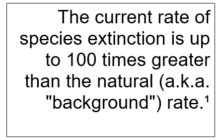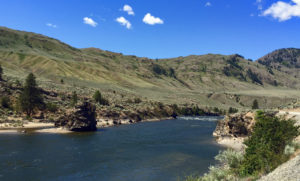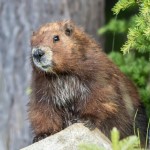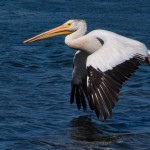Species at Risk Primer Hub
The Species at Risk Primer Hub is a valuable entry point to learn about species at risk in British Columbia and provides resources to support individual and community action. Global habitat loss has increased with development and industrialization. To combat this loss of species and functioning ecosystems, individuals and organizations are working to protect species at both the global and local scales. Stewardship Centre for BC recognizes the importance of local stewardship action as an essential step to tackling global issues. A committed network of small groups can have a large collective impact.

Browsing through the sections in the left-hand panel will help you find information on legislation, management strategies for species that may be in your community or on a project site, and roles for local governments. Whether you are local government staff, an environmental professional, landowner, non-profit organization, or a student, this website can connect you with useful information.
To find out more about specific species at risk, visit the Ecosystems and Species Explorer at BC Conservation Data Centre (CDC).
If you have suggestions on how we can improve this page, please let us know!
BC’s wide range of topography and climates provide homes for a wealth of native species and subspecies – more than any other province. They include:

The Similkameen River and Pacific Northwest Trail, photo G. Shine
- 1,140 vertebrates
- 1,596 vascular plants (a quarter of these are at risk)
- well over 10,000 species of fungi
- over 35,000 insect species²
Biodiversity is a necessary component of functioning ecosystems. Healthy ecosystems provide many benefits to humans including clean air, water filtration, bank stabilization, and nutrient cycling. The importance of protecting species is becoming more widely understood, but measures may lag behind scientific knowledge3,4. SCBC encourages individuals and local governments to make positive changes for species in their communities.
Explore Biodiversity BC or the provincial government’s biodiversity page for an overview of the importance of biodiversity, useful maps, and reports on regions across the province.
The federal Species at Risk Act defines a ‘species at risk’ as, “an extirpated, endangered, threatened species, or a species of special concern”. Over 1,600 species in British Columbia are considered to be at risk. Habitat loss is the greatest driver of species loss, followed by pollution, overexploitation, and the introduction of non-native invasive species. Visit the Management Strategies page for further information on threats to different species groups and actions that can be taken. We can all help protect species and their habitats.
How many are there?
The BC Conservation Data Centre (CDC) collects scientific data and has the most complete list of Species at Risk in the province. The data is grouped into Red-listed (extirpated, endangered and threatened) and Blue-listed species (special concern). The Committee on the Status of Endangered Wildlife in Canada (COSEWIC) is an independent advisory panel to the federal Minister of Environment and Climate Change Canada that meets twice a year to assess the status of wildlife species at risk of extinction. Various provincial and federal laws offer different protections depending on a species’ given classification. For more information on what each piece of legislation does, what it includes, and the legal protections involved, visit the ‘Legal Protection’ page.
Table 1: Species considered to be at risk in British Columbia under various pieces of legislation.
Legislation or List Number of Species Listed CDC listings, BC - 811 Red Listed Species
- 808 Blue Listed Species
- 1,619 in total.
Wildlife Act, BC - 4 listed as threatened or endangered.
- 0.25% of total.
COSEWIC listings, Federal - 1,238 listed as extirpated, endangered or threatened.
- 80 listed as special concern.
- 81% of total.
Species at Risk Act, Federal - 150 listed as extirpated, endangered or threatened.
- 54 listed as special concern.
- less than 15% of total.
- Burrowing Owl, A. Morffew
- Sea Otter, J. Kirkhart
- Vancouver Island Marmot, T. Barbin
- American White Pelican, I. Tayllor
These are the four species at risk listed in BC’s Wildlife Act. The Sea Otter (Enhydra lutris) is threatened (Schedule D), while the Vancouver Island Marmot (Marmota vancouverensis), Burrowing Owl (Athene cunicularia), and American White Pelican (Pelecanus erythrorhynchos) are endangered (Schedule E).
Good to know – some species at risk terms:
- Extinct: a wildlife species that no longer exists.
- Extirpated: a wildlife species that no longer exists in the wild in one or more locations but occurs elsewhere.
- Endangered: a wildlife species facing imminent extirpation or extinction.
- Threatened: a wildlife species likely to become endangered if limiting factors are not reversed.
- Special Concern: a wildlife species that may become a threatened or an endangered species because of a combination of factors.
- Data Deficient: not enough information to (a) resolve a wildlife species’ eligibility for assessment or (b) permit an assessment of the risk of extinction.
- Not at Risk: a wildlife species that has been found not at risk of extinction given the current circumstances.
 Preview of the data available on the SAR Primer Webpage. Click here to visit the external site.
Preview of the data available on the SAR Primer Webpage. Click here to visit the external site.
References
- Ceballos, G., Ehrlich, P.R., Barnosky, A.D., Garcia, A., Pringle, R.M., and Palmer, T.M. (2015). Accelerated Modern Human-Induced Species Losses: Entering the Sixth Mass Extinction. Science Advances, Vol 1 (5).
- Government of BC. (2018). Protecting B.C.’s Biodiversity. Available at https://www2.gov.bc.ca/gov/content/environment/plants-animals-ecosystems/biodiversity.
- Mooers, A.O., Doak, D.F., Findlay C.S., Green, D.M., Grouios G., Manne, L.L., Rashvand, A., Rudd, M.A., and Whitton, J. (2010). Science, Policy, and Species at Risk in Canada. BioScience. Vol 60 (10). Available at https://academic.oup.com/bioscience/article/60/10/843/231686.
- Biber, E. (2012). Which Science? Whose Science? How Scientific Disciplines can Shape Environmental Law. The University of Chicago Law Review. Vol 79.




